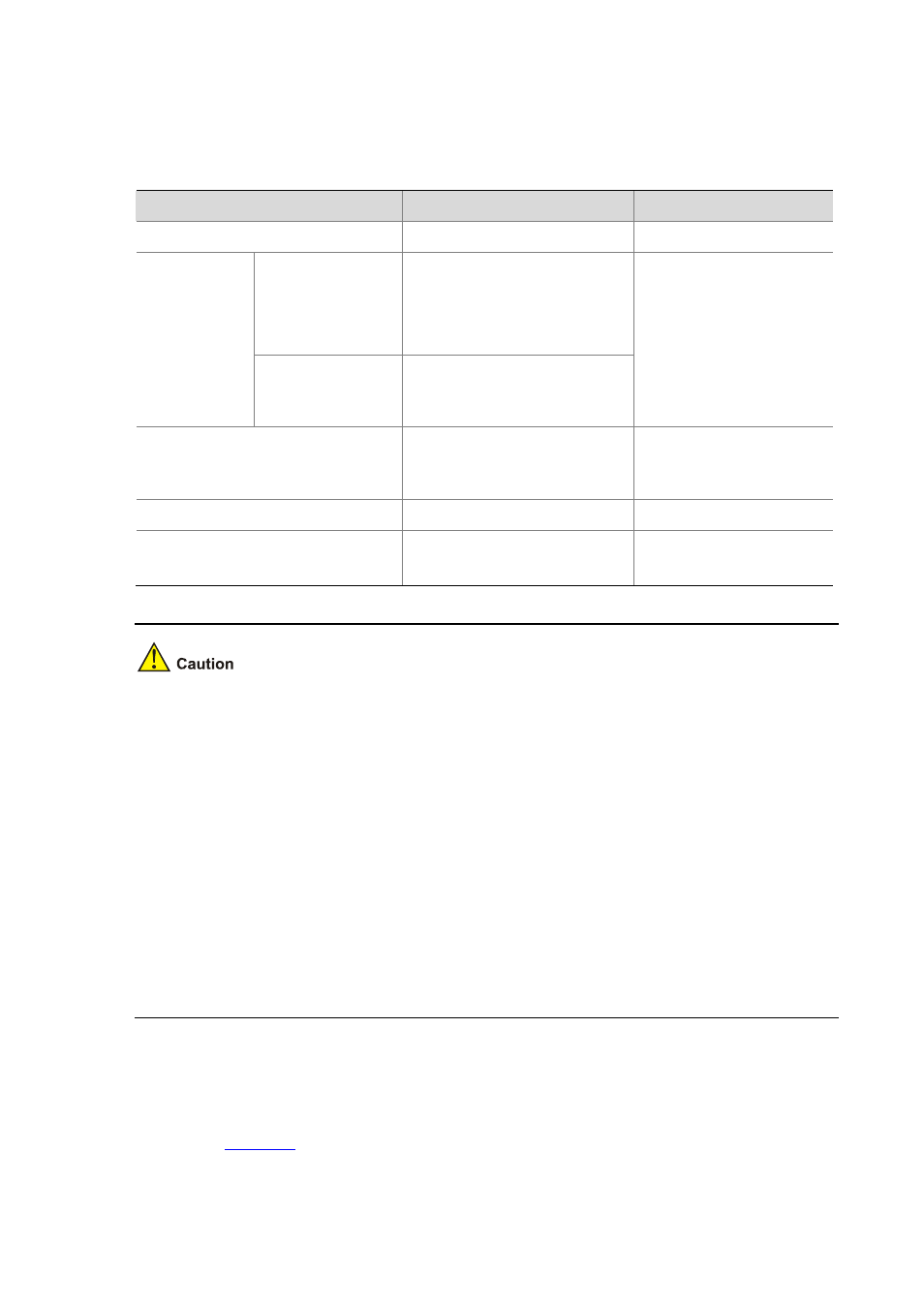Configuring the digest snooping feature, Digest snooping configuration example – H3C Technologies H3C S5120 Series Switches User Manual
Page 197

1-32
Configuring the Digest Snooping feature
You can enable Digest Snooping only on a device that is connected to a third-party device that uses its
private key to calculate the configuration digest.
Follow these steps to configure Digest Snooping:
To do...
Use the command...
Remarks
Enter system view
system-view
—
Enter Layer 2
Ethernet port view,
or Layer 2
aggregate port
view
interface interface-type
interface-number
Enter port
view or port
group view
Enter port group
view
port-group manual
port-group-name
Required
Use either command.
Enable digest snooping on the port
or port group
stp config-digest-snooping
Required
Not enabled by default
Return to system view
quit
—
Enable global digest snooping
stp config-digest-snooping
Required
Not enabled by default
z
With the Digest Snooping feature enabled, comparison of configuration digest is not needed for
in-the-same-region check, so the VLAN-to-instance mappings must be the same on associated
ports.
z
With global Digest Snooping enabled, modification of VLAN-to-instance mappings and removing of
the current region configuration using the undo stp region-configuration command are not
allowed. You can only modify the region name and revision level.
z
You must enable Digest Snooping both globally and on associated ports to make it take effect. It is
recommended to enable Digest Snooping on all associated ports first and then globally, thus
making the configuration take effect on all configured ports and reducing impact on the network.
z
You are recommended not to enable Digest Snooping on MST region edge ports, thus avoiding
loops.
z
You are recommended to enable Digest Snooping first and then MSTP. Do not configure Digest
Snooping when the network works well, thus avoiding traffic interruption.
Digest Snooping configuration example
1) Network
requirements
As shown in
z
Device A and Device B connect to Device C, which is a third-party device. All these devices are in
the same region.
